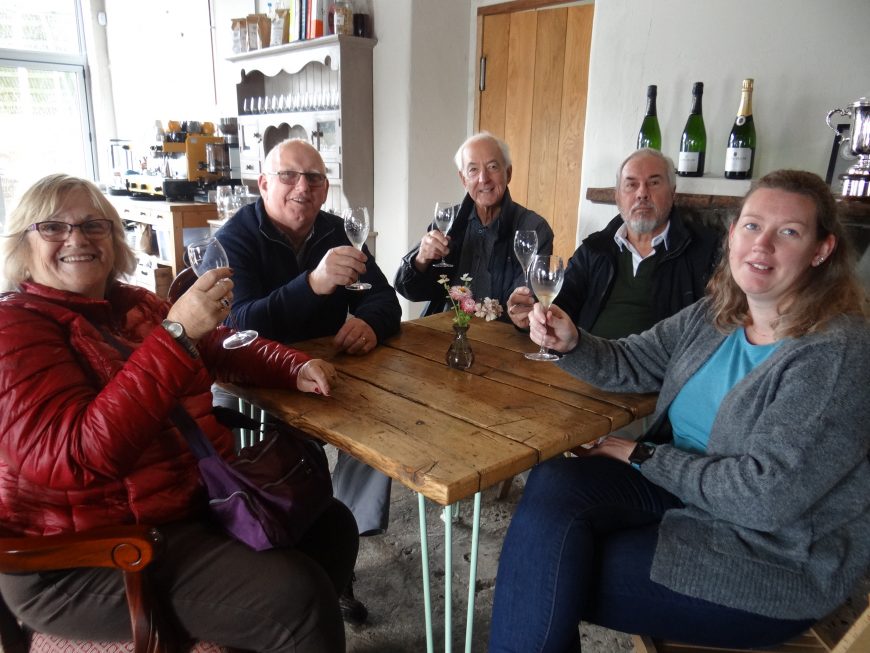
A fascinating insight into the art of award-winning English wine making was given to club members who visited the Langham Estate vineyard at Crawthorne near Dorchester.
Guide for the tour was estate owner Justin Langham who explained that with increasing uncertainty about future revenue in the agricultural sect and the availability of government grants to farmers he decided to plant 30 acres of their estate with grapes so that they could control the price of the product they made.
Having attended a course on vine growing and wine making he looked for the right site on their 1,000 hectare estate and came up with the site at Crawthorne with its south-facing aspect, light loam soil over chalk and unique microclimate, which he judged would be the perfect territory for ripening the classic sparkling varieties – Chardonnay, Pinot Noir and Pinot Meunier.
Established hedgerows provide natural wind breaks although miles of fencing had to be installed to keep out rabbits, foxes, deer and badges. Growing their own grapes he explained, means they can pick at optimum ripeness, free from the shackles of contract purchasing.
Planted in 2009, the 33,000 vines set out over 240 rows and supported by 50 kilometres of wire, had to be ordered two years in advance to allow for the correct grafting of European vines onto an American root stock.
Justin explained the long and complex process of looking after the vines during the growing season including clipping away long shoots and overhanging leaves – thankfully a task done using powered cutters.
At the time of the visit the grapes were just a couple of weeks away from hand picking. When this happens (using mainly East European labour) the grapes – in a good year this can be 93 tons and in a bad year just two tons – are taken to the on-site press before the juice is pumped into either wooden barrels (recycled from Burgundy) or stainless steel tanks which have their own heating and cooling jackets.
The juice is left to ferment naturally which can take two to three months before being blended into the four wine varieties they produce and decanted into bottles with yeast where they sit for the a minimum of nine months.
During this time the bottles are rotated and eventually stood upside down so that any sediment collects in the neck of the bottle.
A bottling machine (which they acquired this year) is then used to siphon off the sediment, top up the wine, add a small amount of sugar and insert the cork, wire securing net and foil wrapper.
In a good year Justin said they can produce up to 65,000 bottles of wine, a third of which is sold direct to the public, the rest going to hotels and retail outlets with a small quantity exported.
Having spent over an hour hearing how the wine is made everyone was eager to sample three of the estate’s gold medal winning wines – quite a few also decided to take home a bottle or two.
On behalf of the club Graham Lowe congratulated Justin on his efforts and his success and even forgave him the fact that he admits to owning a Triumph TR5.